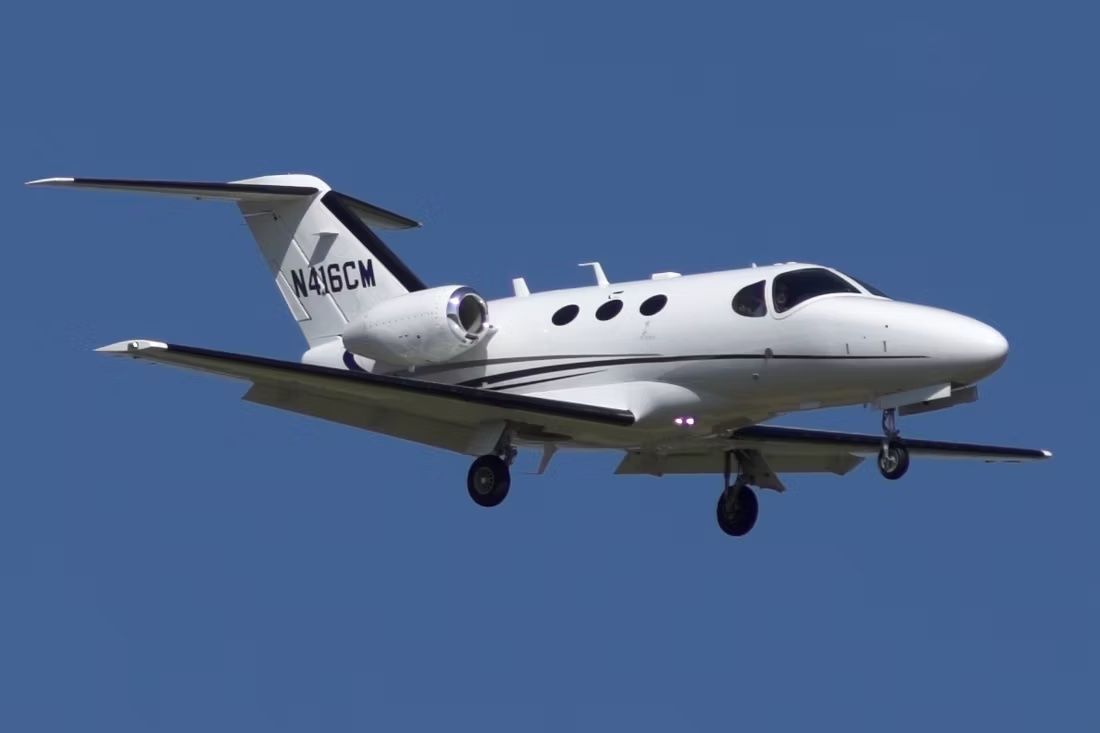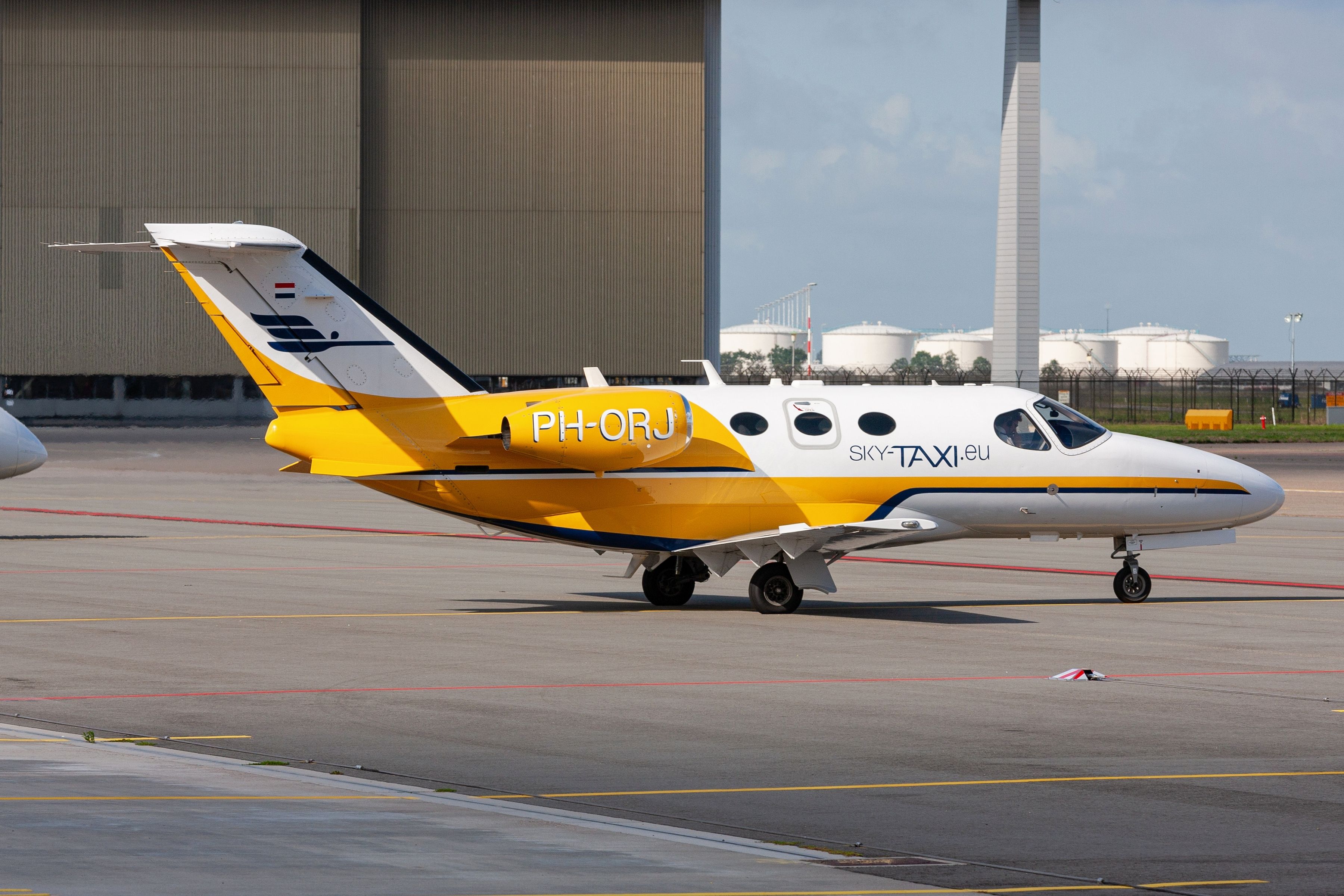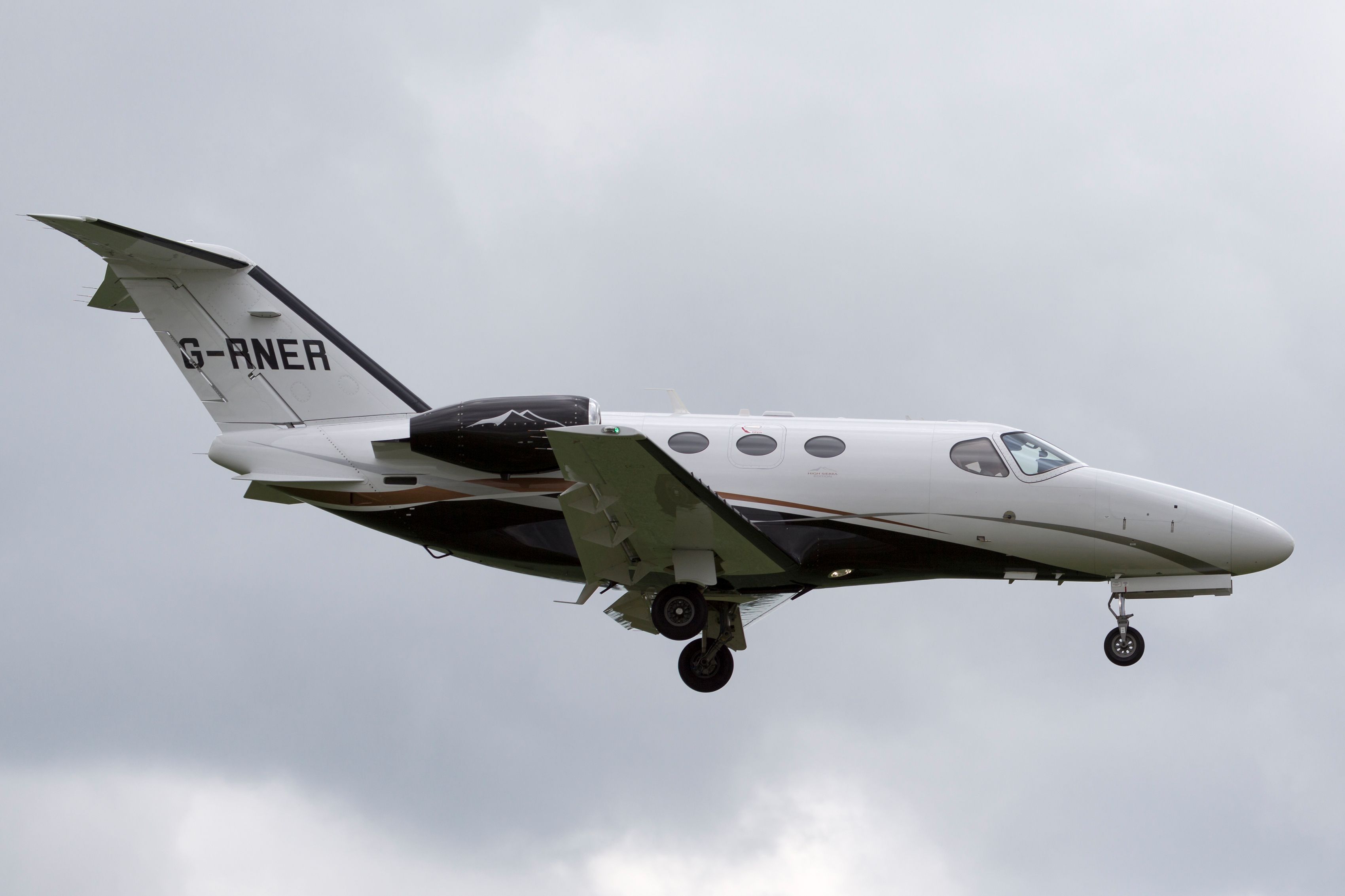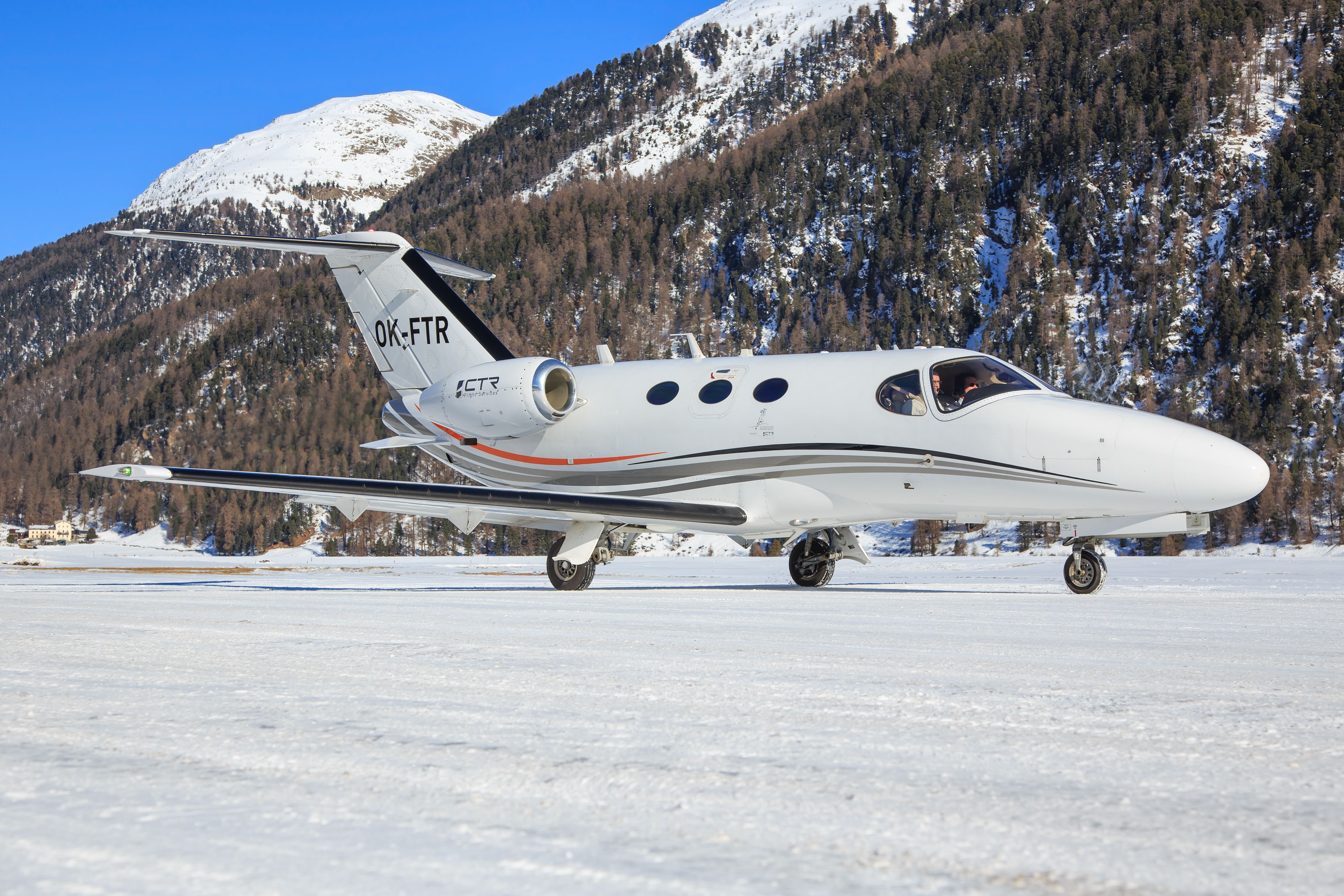Summary
- Cessna Citation Mustang had excellent performance on short runways and high top speeds for a small jet.
- The Mustang beat out the Eclipse 500 as the first very light jet to be produced.
- Introduction of the Citation M2 led to the Mustang’s production being canceled due to market overlap.
The Cessna Citation Mustang was the smallest Cessna Citation aircraft that was produced. The very light jet was produced for over ten years and nearly 500 total aircraft were built. Although the aircraft was eventually phased out due to the introduction of the Cessna Citation M2, the aircraft was seen as a very successful light jet and was used throughout the world.
The small aircraft had excellent performance on short runways and high top speeds for a small aircraft. Charter companies throughout the world utilized the jet to shuttle up to five passengers to nearby destinations with short flight times. Let’s take a closer look at the brief history of the Cessna Citation Mustang and some notable design features that made this Citation jet so prominent for business jet operators.
Brief history
Initially, Cessna unveiled the Citation Mustang in 2002 at the NBAA convention in Las Vegas, Nevada. After a short development program, Cessna flew the Citation Mustang for the first time on April 23, 2005. The company continued flight testing and eventually certified the aircraft with the Federal Aviation Administration (FAA) on September 8, 2006. The remainder of the FAA certification was awarded in November 2006, which allowed the light jet to fly through known icing conditions. The necessary certification was awarded by the FAA on November 22, 2006, and Cessna delivered the first production jet on that same day.
Photo: Bjoern Wylezich | Shutterstock
The Citation Mustang was one of the first very light jets to be developed and the first to be produced. The aircraft narrowly beat out the competing Eclipse 500 very light jet. The Eclipse 500 was first certified in July 2006, although the first delivery did not take place until December 31, 2006, meaning that Cessna began delivering its very light jet first and became the first aircraft manufacturer to enter the light jet market. The Eclipse 500 would only be produced until 2008 and just over 250 aircraft were produced.
The first retail delivery of the Mustang came in April 2007. The aircraft was produced in Cessna’s production facility in Independence, Kansas, instead of near the company’s headquarters in Wichita, Kansas.
Several years later, Cessna unveiled a significant upgrade to the Citation Mustang, which was called the High Sierra. This was a limited edition version of the aircraft with several luxurious upgrades. On July 26, 2010, Cessna unveiled the High Sierra at EAA AirVenture in Oshkosh, Wisconsin.
The Senior Vice President of Sales and Marketing at the time, Roger Whyte, spoke about the upgrade, saying,
“The special High Sierra Edition gives our customers more luxurious interior and exterior options to outfit their Mustang. The Citation Mustang has been an incredibly popular aircraft with more than 300 delivered worldwide since the first delivery in April 2007. The High Sierra Edition package will be a great complement for this successful airplane.”
The High Sierra version of the Citation Mustang included high-quality interior upgrades. It also utilized enhanced avionics with the Garmin G1000, which included Synthetic Vision Technology (SVT) and electronic charts on large screens. A new paint scheme was introduced and smaller upgrades, such as locking fuel caps, were also used.
Photo: Ryan Fletcher | Shutterstock
However, Cessna eventually ceased production of the very light jet in 2017. The company credited a lack of customer demand for the aircraft as the main reason it ceased production. Much of this was most likely driven by the introduction of another Cessna light jet, which was called the Citation M2.
There was a large overlap in the market between the Citation Mustang and the Citation M2. Many customers opted to purchase the slightly larger and brand-new Citation M2 instead of the Citation Mustang, which had been produced for over ten years. Additionally, the Citation M2 was faster and had a larger range but still retained the short runway performance that was similar to the Citation Mustang.

5 Reasons Pilots Love Cessna’s Smallest Jet: The Citation Mustang
The aircraft provides a variety of unique benefits for pilots.
It could also hold seven passengers instead of the four to five that the Citation Mustang held. One other feature that led to customers choosing the Citation M2 was that it required the common C/E-525 type rating instead of the C/E-510 rating required by Citation Mustang operators. This potentially reduced training and crew costs for jet operators.
Throughout the production of the aircraft, Cessna produced upwards of 40 Citation Mustangs per year. However, after the Citation M2 was introduced, Cessna only produced an average of eight Citation Mustangs per year, and the program was canceled after three years of market overlap. In total, 479 Citation Mustangs were built and operated.
Notable design features
The Citation Mustang resembles many other light business jets with a low, tapered wing and retractable tricycle gear. The light jet is made of mostly aluminum lightweight materials and has a length of over 40 feet, a wingspan of over 43 feet, and a height of just 13 and a half feet. The aircraft is also certified for single pilot operation like most light business jets, and can hold four to five passengers. This light jet was considered an entry-level jet by Cessna.
Photo: Mike Fuchslocher | Shutterstock
The Citation Mustang is powered by two Pratt & Whitney Canada PW615F turbofan engines. Per Guardian Jet, these each produce over 1,450 pounds of thrust. These engines power the Mustang to a maximum speed of 420 knots (483 miles per hour) and a typical cruise speed of 340 knots (390 miles per hour). The aircraft has a range of 1,167 nautical miles (1,343 miles) at its maximum takeoff weight, which was 8,645 pounds.
One of the most notable features of the aircraft was its impressive takeoff and landing distance. The Citation Mustang only required a takeoff distance of 3,110 feet and a landing distance of less than 2,400 feet. This allowed operators to utilize much smaller runways than typical business jets.







